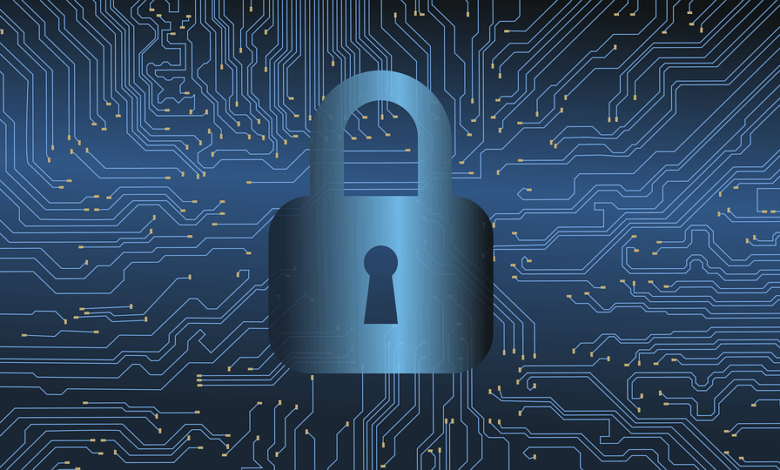Crypto Security: Mastering Your Private Keys and Custody

The revolutionary promise of cryptocurrency lies in its ability to grant individuals absolute, verifiable ownership over their digital wealth, entirely free from the need for centralized banks or trusted intermediaries. This unprecedented financial autonomy, however, comes tethered to a non-negotiable and profound level of individual responsibility. When you hold crypto assets, you are not merely transferring money; you are becoming your own bank, assuming the full and sole responsibility for safeguarding your digital private keys.
The specialized discipline of Security and Custody is the critical field dedicated to protecting these keys. It addresses the unique and existential threats posed by hackers, malware, physical loss, and human error in the decentralized environment.
Since the entire system is designed without a central “reset” button or customer service line, the loss or compromise of a private key means the rapid, irreversible, and permanent loss of access to all associated funds.
Understanding and mastering the best practices for key management, utilizing the correct wallet technologies, and implementing multi-layered security protocols are absolutely essential steps. This diligence is the only reliable defense against the myriad of sophisticated and ever-evolving threats in the high-stakes world of decentralized finance.
The Non-Negotiable Principle of Key Ownership
The foundation of all cryptocurrency security is rooted in the concept of key ownership. When a user holds a crypto asset, they don’t actually hold a physical coin or a digital file representing money. Instead, they possess a unique, cryptographic code known as the Private Key. This private key is the singular piece of data required to authorize any transfer or transaction from the associated public address on the blockchain.
This private key is the ultimate proof of ownership. The entire decentralized system respects the commands issued by this key, regardless of who physically possesses it. Because the blockchain is permissionless and censorship-resistant, there is no mechanism for anyone—not a government, not a bank, and not the network’s creator—to override a transaction signed by the correct private key.
The immediate consequence of this structure is severe. If a user loses their private key, the funds associated with that address are permanently inaccessible. They are locked forever on the immutable ledger. Conversely, if a malicious actor gains unauthorized access to the private key, they can instantly drain all funds without any possibility of reversal or recovery.
This absolute, non-delegable responsibility for key security is the central challenge of digital asset custody. It forces the user to choose their security strategy with extreme care. The user must treat their private key with the same level of security they would accord a massive stack of cash or the original deed to their home.
The Crucial Role of Digital Wallets
A Digital Wallet is the essential software or hardware application that manages, stores, and facilitates the use of the user’s private keys. The wallet does not hold the cryptocurrency itself; rather, it holds the keys that allow the user to interact with the funds recorded on the blockchain. Choosing the appropriate wallet technology is the single most important decision in managing digital asset custody.
A. Hot Wallets (Online Storage)
Hot Wallets are any wallets that are actively connected to the internet. This includes desktop software wallets, mobile applications, and wallets hosted by centralized exchanges. Hot wallets offer maximum convenience and immediate liquidity for frequent transactions. They are easy to set up and use for daily operational needs.
However, the constant connection to the internet makes them inherently more susceptible to security threats. These threats include hacking, malware, and phishing attacks designed to steal the keys. Hot wallets should only be used to hold small amounts of cryptocurrency needed for immediate, short-term transactions.
B. Cold Wallets (Offline Storage)
Cold Wallets, or hardware wallets, are devices that store the private keys completely offline. These keys are never exposed to the internet. This physical isolation makes them immune to online threats like hacking or malware. Cold storage is universally considered the most secure method for holding large amounts of cryptocurrency for the long term.
These devices require physical interaction and often a personal identification number (PIN) to sign transactions. While less convenient than hot wallets, their superior security is non-negotiable for substantial crypto holdings. This method is the ultimate form of self-custody.
C. Seed Phrases (Recovery Keys)
Virtually all modern wallets utilize a Seed Phrase (or recovery phrase) as the ultimate backup mechanism. This phrase, typically a sequence of 12 or 24 randomly generated words, is the human-readable master key. It can be used to regenerate the private keys and restore access to the wallet on any new device. The seed phrase must be stored offline, securely, and away from the hardware wallet itself. Losing both the wallet and the seed phrase results in permanent loss of funds.
Mitigating Security Risks for Custody

Maintaining secure custody of private keys requires implementing rigorous protocols that address both digital and physical security risks. A multi-layered defense strategy is necessary to thwart sophisticated attackers. Security is an ongoing, continuous process, not a one-time setup.
D. Multi-Factor Authentication (MFA)
Implementing Multi-Factor Authentication (MFA) on any wallet or exchange account that allows it is a mandatory security measure. MFA requires the user to provide two or more distinct verification factors to log in or authorize a withdrawal. This prevents hackers from gaining access even if they manage to steal the user’s password. Time-based one-time passwords (TOTP) from an authenticator app are generally preferred over SMS codes.
E. Physical Security of Seed Phrases
The physical security of the seed phrase is equally as important as the digital security of the hardware wallet. The phrase should never be stored digitally (e.g., in a photograph, on a cloud drive, or in an email). It should be written down accurately on paper or etched into metal. This physical copy must then be stored securely in a fireproof safe, a secure deposit box, or a similarly protected location. Any digital record of the seed phrase is a critical, avoidable vulnerability.
F. Phishing and Malware Defense
Users must exercise extreme caution against phishing attacks. These attacks involve sophisticated fraudulent emails or websites designed to trick users into revealing their private keys or seed phrases. Users should always manually verify website URLs. They must never click on unsolicited links asking for financial credentials. Malware protection on personal computers and mobile devices is necessary to prevent keylogging or other surveillance techniques.
G. Segregation of Assets
For substantial holdings, it is a sound practice to segregate assets across multiple wallets and storage methods. Using multiple hardware devices and different seed phrases ensures that the compromise of one device or one key does not result in the loss of all funds. This diversification of custody minimizes catastrophic single-point failure risk.
Centralized Exchange Risk (Custodial Risk)
For many users, particularly newcomers, interacting with a Centralized Exchange (CEX) is the primary method of buying and trading crypto assets. While CEXs offer convenience and liquidity, they introduce a distinct and high-stakes form of custodial risk. This risk must be clearly understood and managed.
When funds are held on a CEX, the exchange itself holds the private keys. The user has an account balance recorded in the exchange’s private database. This means the user is exposed to several external risks.
The CEX is a single, massive target for hacking. A successful security breach on the exchange can instantly compromise billions of dollars in customer funds. The exchange often becomes the victim of large-scale, sophisticated attacks.
The user is also exposed to insolvency risk. If the exchange fails financially or goes bankrupt, the user becomes an unsecured creditor. They may face lengthy legal battles and significant, permanent loss of their deposited assets. This risk is entirely external to the user’s personal security practices.
The golden rule of crypto custody is “Not Your Keys, Not Your Coin.” Funds stored on a CEX are not truly under the user’s control. Therefore, users should transfer all non-trading funds into their own self-custodied cold wallets immediately after purchasing. This mitigates the critical external counterparty risk.
Advanced Security Measures

Sophisticated investors and businesses utilize highly advanced measures to manage large-scale crypto custody. These measures move beyond simple hardware wallets to incorporate distributed signing mechanisms. This further decentralizes control.
H. Multi-Signature (Multisig) Wallets
Multi-Signature (Multisig) wallets require multiple private keys to authorize a single transaction. For example, a 2-of-3 multisig wallet requires at least two of the three unique private keys to sign the transaction before it is executed on the blockchain. This structure prevents any single person from unilaterally moving funds. It provides a crucial governance layer.
Multisig is ideal for businesses, DAOs, and joint family accounts. It prevents theft by a single disgruntled employee or the catastrophic loss resulting from the compromise of one key. The keys should be held by different individuals and stored in different physical locations.
I. Institutional Custody Solutions
For institutional investors, specialized Institutional Custody firms provide highly secured, regulated storage solutions. These firms often utilize complex technologies like secure hardware modules (HSMs) and physically segregated, heavily monitored cold storage vaults. These solutions meet the stringent regulatory and audit requirements of large financial entities. This service provides professional-grade security.
J. Inheritance and Estate Planning
A crucial, often neglected security issue is inheritance planning. Since access to crypto funds is lost if the private key or seed phrase is lost, a mechanism must be in place for heirs to safely access the keys upon the owner’s death or permanent incapacitation. Multisig wallets and encrypted time-lock protocols are used to ensure the secure, authorized transfer of keys to designated executors. This prevents the loss of a digital legacy.
Conclusion
Security and Custody are the absolute, non-negotiable foundations of engaging with the cryptocurrency ecosystem.
The ultimate, sole responsibility for safeguarding digital wealth rests entirely on the individual owner’s disciplined protection of their private keys.
Cold Wallets (hardware devices) provide the necessary physical isolation and are the gold standard for securely holding large, long-term asset reserves.
Hot Wallets, while convenient for daily transactions, are inherently vulnerable to online threats and should only store minimal, operational capital.
The master Seed Phrase, or recovery key, must be stored offline and physically protected, away from the associated hardware device, to prevent total loss.
Centralized Exchanges introduce high custodial risk, exposing user funds to the external threats of hacking and potential corporate insolvency.
The absolute rule of custody is “Not Your Keys, Not Your Coin,” necessitating the transfer of non-trading funds into personal cold storage immediately.
Multi-Signature (Multisig) technology provides a crucial governance layer, preventing a single compromised key from leading to catastrophic theft.
Rigorous protocols, including Multi-Factor Authentication and defense against sophisticated phishing attacks, are essential for mitigating digital threats.
Mastering these layered security practices is the only reliable defense against the irreversible and permanent loss of digitally self-custodied wealth.
The commitment to advanced custody protocols is the fundamental cost of achieving complete, sovereign financial autonomy.
This disciplined security management ensures the long-term protection and preservation of one’s entire digital financial future.


